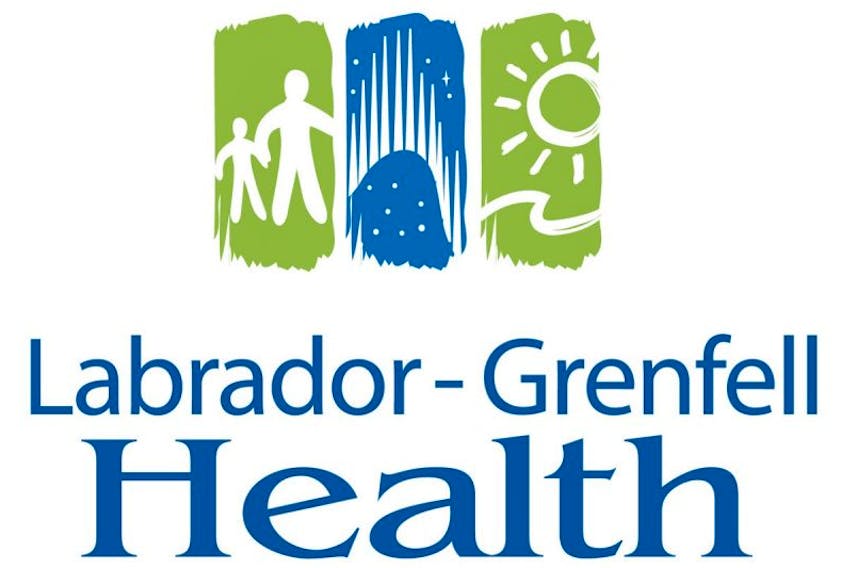ST. ANTHONY, N.L. – Just weeks after cutting eight acute care beds, staff at Charles S. Curtis Memorial Hospital were faced with an overflow of patients.
In February, the regional health authority Labrador-Grenfell Health (LGH) announced it would be eliminating some beds at the St. Anthony hospital, leaving a total of 42 acute care beds, and putting the other beds in storage.
According to hospital officials, this was done in order to improve patient privacy.
However, in March the hospital was dealing with an overflow of patients in the emergency room, according to documents obtained by the Northern Pen through an Access to Information request.
An email from the acute care site manager to LGH brass on March 16 at 1:58 p.m., states there was 100 per cent occupancy on the medicine/surgical and OBS units at the hospital.
The site manager wished to add extra beds in ICU, the medicine/surgical and OBS units to accommodate the extra patients.
Barbara Molgaard Blake, then the interim CEO of LGH, initially approved of having the beds come out of storage but reversed the decision after acting regional director acute and long-term care services, Wanda Slade, weighed in.
“Maybe we have the option to float staff if there are extra,” said Slade in an email. “Just thinking it is not good, perception wise, to put beds back that were just removed.
“I’m all for whatever method is deemed the best! (which I agree is not taking out beds unless we have to),” responded Molgaard Blake.
After staff were unable to find patients to discharge, it was decided to accommodate the extra admissions on the medicine/surgical unit as there was extra staff there due to the reduction in beds.
Over an hour and a half after the site manager’s initial email, Molgaard Blake wrote that a stretcher had to be used and two clients were kept in ER overnight.
No beds came out of storage.
Two days later, on March 18, a site supervisor sent an email explaining that overflow was still an issue.
The supervisor stated they had to place the patient in a spot they weren’t supposed to use as there was already an overflow patient in ER. The supervisor noted they felt it wasn’t an appropriate place to keep the patient.
Using beds in storage
Labrador-Grenfell Health board chair Boyd Noel told the Northern Pen on Friday the beds in storage can and should be put into use.
According to him, beds that were closed are now in storage in the hospital basement and are still available for use in the event of overflow.
“We’ve been assured that … if they’re needed, in 20 minutes they can be operating again,” Noel said in an interview. “There’s no reason for anybody to be out in the hallway for all night because there’s no bed. That’s not correct. The bed is there and the bed will be put into place where it’s needed.”
Noel also wanted to make it clear that if any staff had any complaints or suggestions about the health facilities anywhere in the LGH region, his door was open.
“My door is open, and our staff is welcome to give us indication of what the problems are here,” he said. “And we’ll fix them.”
Bad flu season and gastrointestinal issues
John Haggie, Minister of Health and Community Services was in St. Anthony on Friday for a health funding announcement at the hospital.
In an interview with The Northern Pen he attributed the March overflow situation at Curtis Memorial to an unusually bad flu season and necessary medical decisions to accommodate patients with gastrointestinal issues.
He said LGH decided to eliminate the beds in February to provide more space for nurses and to improve patient privacy.
According to Haggie, they were comfortable making this decision as bed occupancy was typically low, between 50 and 74 per cent, at the St. Anthony hospital.
“And because of the low utilization of beds, what they decided to do was convert four four-bedded bays into four two-bedded bays,” he said. “It dealt with the privacy issue (and) gave the nurses more space. And because of the fact there was always a quarter of the beds empty here anyway, it didn’t impact the level of services.”
But cold and flu season made things difficult, he says.
“We had the worst flu season in five years and that, we now know, is because one of the components of the flu vaccine was ineffective against the strain that turned up here,” Haggie explained. “We saw spikes in flu numbers we haven’t seen for five years. And that challenged every facility in the province.”
Furthermore, he added the medical officer of health said patients who suffered from the gastrointestinal illness had to be nursed in single-room occupancy.
“What happened was the double rooms then became single rooms,” said Haggie. “And that was done on medical grounds. There were nine people at the time there, so that was nine beds that could not be accessed for patients.
“One night, they ended up with 44 patients instead of 42. That cleared out as the medical officer of health revised the diagnoses. But that was a medical issue.”
Haggie added it is his understanding that hospital staffing is based on demand. According to the minister, staffing can be increased or decreased based on whether demand increases or decreases.
He says every hospital in the province has its own overflow procedure but he couldn’t speak to the specific procedure in place at the St. Anthony hospital.









